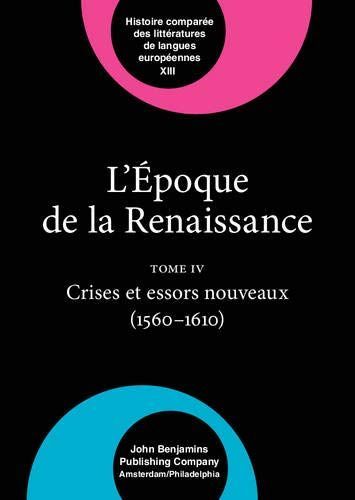
L'époque de la Renaissance 1400-1600
L'Époque de la Renaissance. Crises et essors nouveaux (1560–1610), a collaborative literary history of the second half of the sixteenth century in Europe, responds to a number of challenges, including those critical of the Renaissance concept itself in favour of a broader Early Modern concept. It inventories the writings of its chosen time-span in the broadest cultural sense while remaining attentive to the strong aesthetic emphases and achievements that prevailed. In its descriptions of literary phenomena the book takes into account their diverse historical contexts throughout Europe, including eastern Europe, thus often stressing differences rather than conformities. Its main divisions encompass the new tendencies towards authoritarian orders; the major intellectual adventures and questionings; the latter phases of humanistic erudition; the development of studies of history and society which will become bases for social sciences; the immense flowering of scientifically oriented literature; the Europe of the Courts; “myths” new and old (e.g. the replacement of the Petrarchan beloved by a less unreal vision of woman); the moral crisis and its literary manifestations; the Mannerist aesthetic and its adversaries; the spiritual renewal. The book is dedicated to the memory of its first director, Tibor Klaniczay of the Hungarian Academy of Sciences.